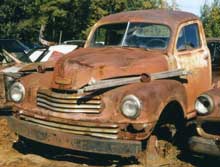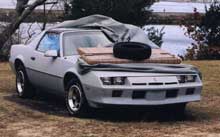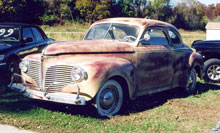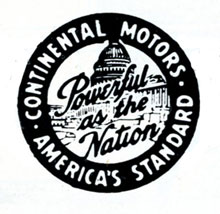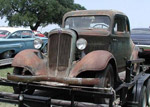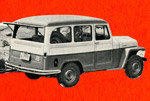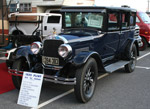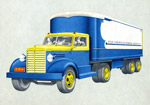Nash Trucks
The words "Nash truck" may conjure up images of the four-wheel drive Quads that fought in World War I. But the Quad wasn't the only early Nash truck. When Charles Nash took over the Thomas Jeffery Company he inherited a line of Jeffery commercial vehicles that carried the Nash name for a while. Nash trucks continued to be built in very small numbers until 1930.
After World War II, however, Nash Motors re-entered the commercial arena, with a line of "Haul Thrift" trucks, mostly for export. The trucks used front sheet metal modified from the 1947-8 Nash Ambassador, like the one in which Cannonball Baker paced the 1947 Indy 500. A brief run of short-wheelbase chassis was fitted with Ashton wrecker bodies and issued to Nash dealers. A few of them are still around. The export trucks generally had much longer wheelbases.
Aside from this run of trucks, which extended as late as 1954, the only postwar commercial Nash was the 1951-54 Rambler Deliveryman, a station wagon with no back seat. It took the purchase of Kaiser Jeep in 1970 for American Motors, Nash Motors' successor, to re-enter the truck market with the Jeep Gladiator pickup.
Imagine my surprise, then, when one Sunday-morning-after-Hershey when I spotted this 1948 Nash "Quad" filling up at a Texaco station. It was, the owner told me, dropped on the chassis of a late model Chevy 4x4. The back of the body was cut off to mount a fifth wheel, allowing it to tow a trailer so large that it hauled both living quarters and a dirt track race car.
The 1948 Nash trucks appearing in this feature were photographed some years ago at Ed Moore's eclectic Bellingham Auto Sales in Massachusetts. They have both been sold, but Ed has plenty more treasures available.

